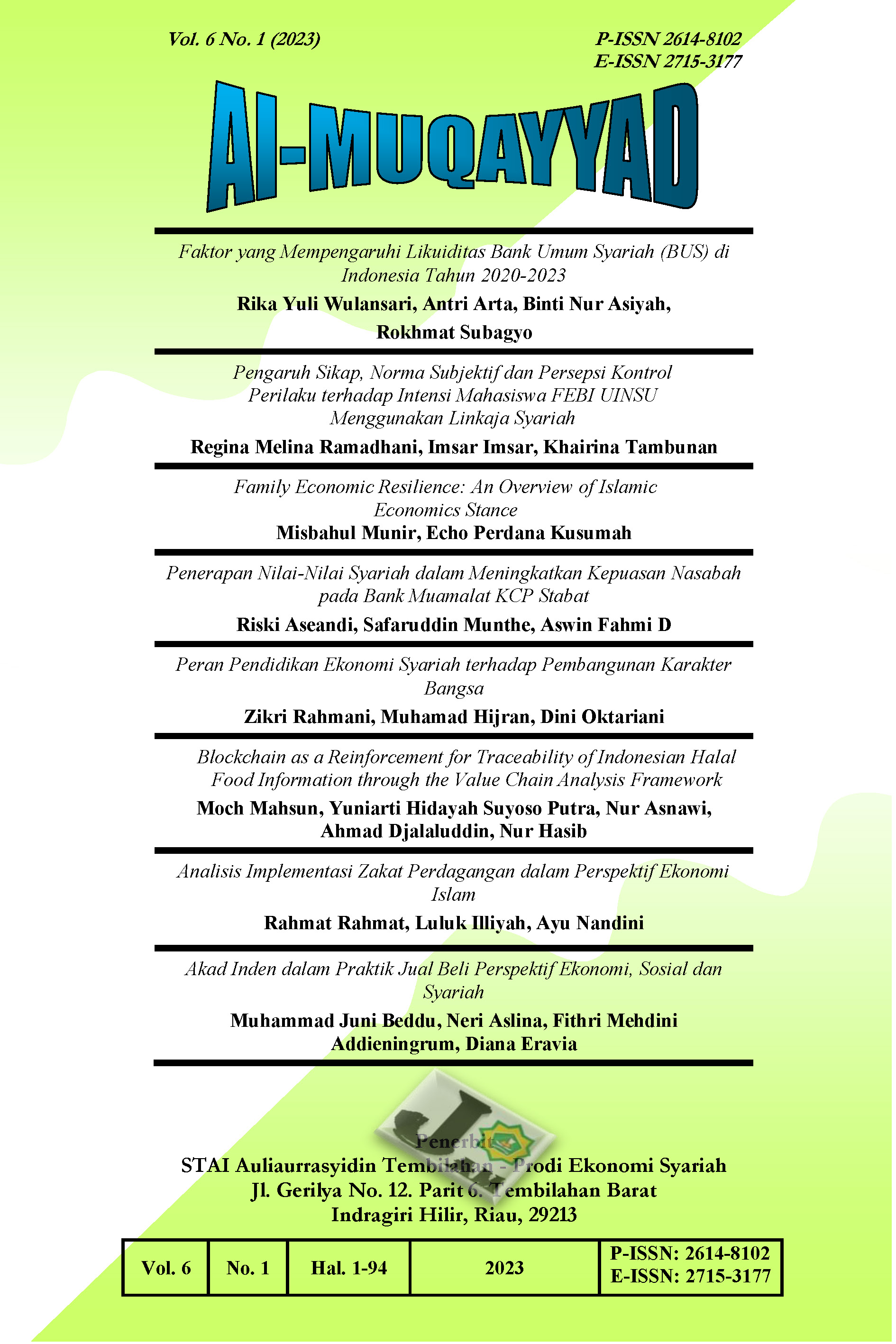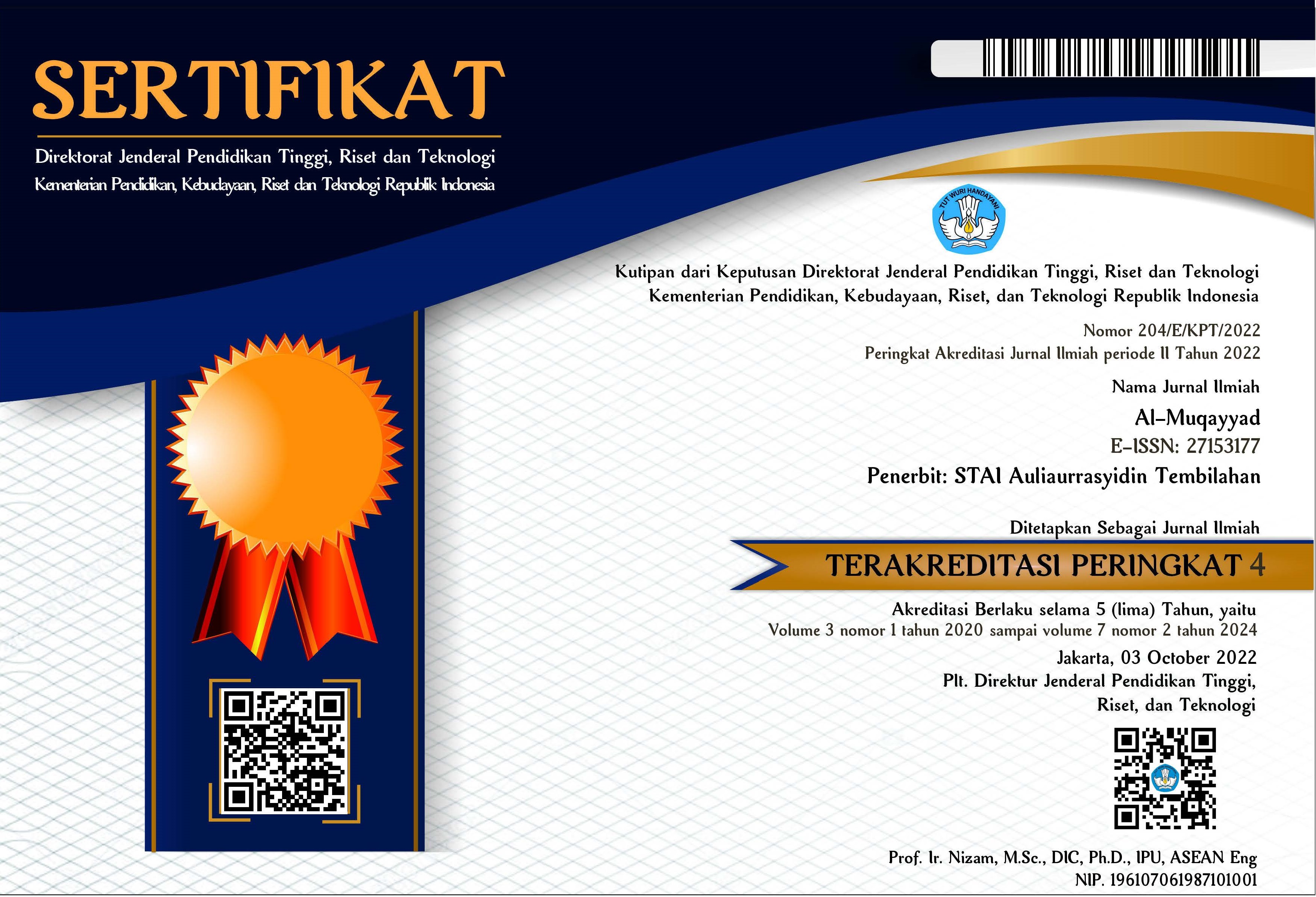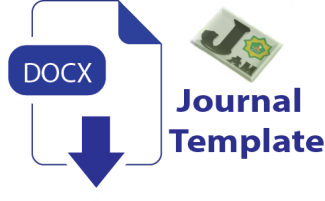Akad Inden dalam Praktik Jual Beli Perspektif Ekonomi, Sosial dan Syariah
DOI:
https://doi.org/10.46963/jam.v6i1.1069Keywords:
Indent Agreement, Buying and Selling, Economics, Social, ShariahAbstract
This research aims to examine the concept of indent in the practice of buying and selling from the perspectives of economics, social, and Shariah. The indent practice has become increasingly popular in transactions, especially in the context of purchasing unavailable goods directly. The research method used is qualitative by conducting content analysis which is commonly used in library research models with a normative juridical approach. This study conducts an in-depth analysis of the concepts, mechanisms, benefits, and challenges associated with pivot contracts. The economic perspective is employed to understand the economic implications of the indent practice in the market, while the social perspective is used to analyze its impact on society and consumers. Additionally, the Shariah perspective is utilized to evaluate the compliance of the indent agreement with the principles of Shariah in Islam. The results of this analysis are expected to provide a better understanding of the concept of indent in the context of buying and selling and serve as a foundation for the development of indent practices that are economically, socially, and Shariah-compliant.
Downloads
References
Abdul Rahman Abdullah Al-Jariri. (20110. “Al-Muamalah Al-Maliyyah Fi Al-Islam Title.”: 132.
Abror, M., (2020), Pelaksanaan Perjanjian Jual Beli Sepada Motor Dengan Sistem Indent Persepektif Ekonomi Islam (Studi Pada Dealer Pt. Thamrin Brother Kota Bengkulu), Bengkulu: Thesis IAIN Bengkulu.
Ali, S. N. (2007). Islamic Banking and Finance: Principles and Practices. New Delhi: Excel Books.
Andreas, d. (2010). Users of the World, Unite! The Challenges and Opportunities of social media. Business Horizons 53, No. 1, 61-70.
Archie B. Carroll and Ann K. Buchholtz. (2014). “Business and Society: Ethics, Sustainability, and Stakeholder Management.”: 211.
Batam, T. T. (2021). Metode Penelitian Kualitatif, Kepustakaan, Kuantitatif dan Tindakan Kelas (Pedomana Penulisan Proposal dan Skripsi). Bantul: Lembaga Ladang Kata.
Dzakiyah, A. R., Andi Rohmah, (2021). Akad Jual Beli Indent PT Perumahan Karunia Indo Jaya Kota Palopo Dalam Perspektif Hukum Ekonomi Syariah, Palopo: Skripsi IAIN Palopo
Ferrell, O. C., Fraedrich, J., & Ferrell, L. (2018). Business Ethics: Ethical Decision Making and Cases (12th Ed.
Gershuny, J. (2016). Consumption and the Making of Respectability. Cambridge: Cambridge University Press.
Haigh, M. J. (2015). The Business of Tourism Management. Harlow: Pearson Education Limited.
Hamid, A. S. (2011). Islamic Finance: Principles, Performance and Prospects. Kuala Lumpur: International Shari’ah Research Academy for Islamic Finance.
Ibn Qayyim Al-Jawziyyah. (2003). “No TitleIghathatul Lahfan Fi Masayid Ash-Shaytan.”: 318.
Indriani, T. (2021). Legal Protection for Buyers in Car Sale-Purchase Transaction on Indent Basis (Vol. 01 Juli 2021). (I. 2020, Ed.) Semarang: Proceedings of the 3rd International Conference on Legal Protection for Buyers in Car Sale-Purchase Transaction on Indent Basis.
Jajasan Penjelenggara Penterdjemah/Pentafsir Al-Qoeraan (1967) / Tim Penyempurnaan Terjemahan Al-Qur'an. (2019). Al-Qur'an dan Terjemahannya. Jakarta: Lajnah Pentashihan Mushaf Al-Qur'an.
John D. Conklin. (2018). “Effective Business Communication.”
Kamali, Mohammad Hashim. (2000). “Islamic Commercial Law: An Analysis of Futures and Options.”: 78.
———. (2003). “No Title Principles of Islamic Jurisprudence.” : 225.
Khan, M. A. (2015). Islamic Finance: Principles and Practice. Cheltenham: Edward Elgar Publishing.
_____________, Islamic Banking and Finance: An Introduction to Islamic Finance, 2nd ed. Singapore: World Scientific Publishing.
Larsen, D. (2010). Delayed Product Differentiation. The Journal of Industrial Economics 58, , 1467-6451. 2009. 00397. x (No. 1), 39-62.
Lindgreen, Adam, dkk.,. (2018). The Crisis of Food Brands: Sustaining Safe, Innovative and Competitive Food Supply. Cambridge: Cambridge University Press.
Michael Blowfield and Alan Murray. (2014). “No Title.” Corporate Responsibility, 2nd ed: 68.
Mohd. Ma’sum Billah. (2011). “Islamic Commercial Law: Contemporarization of Its Tradition.”: 65.
Muttaqin, A. (2022), Hillah Hukmi dalam Pengembangan (Legal Reform) Fatwa DSN MUI Tentang Pelaksanaan PPR Inden Syariah Hillah Hukmi dalam Pengembangan (Legal Reform) Fatwa DSN MUI Tentang Pelaksanaan PPR Inden Syariah. El-Faqih: Jurnal Pemikiran dan Hukum Islam Volume 8, Nomor 1, April 2022 e-ISSN: 2503-314X; p-ISSN: 2443-3950
Oktaviani, R., & Suharto, E. (2016). Analisis Putusan Mahkamah Agung Nomor 812 K/Pdt/2011 tentang Jual Beli Indent dalam Perspektif Hukum Perdata. Jurnal Ilmiah Widya Hukum, 3 (1), 7-16.
Ormrod, P. D. (2016). The Palgrave Handbook of Society, Culture and Outer Space. Basingstoke: Palgrave Macmillan.
Peter J. dkk. (2017). Marketing Management: Knowledge and Skills. New York: McGraw-Hill Education.
Philip Kotler, dkk., (2016). Marketing Management, 15th ed. Harlow: Pearson Education Limited.
Sugiyono. (2014). Metode Penelitian Kuantitatif, Kualitatif dan R&D (Vols. Cet ke-21). Bandung: Alfabeta.
Ulpah, Z. F. (2023). Transaksi Jual Beli Sistem Inden Di Pt Global Mar Interindo Dalam Perspektif Hukum Islam. Jurnal Pemikiran Ekonomi Islam, 6(1), 84-93.
Usmani, M. M. (2005). An Introduction to Islamic Finance, 2nd ed. Karachi: Maktaba Ma'ariful Qur'an.
Visse, H. (2013). Islamic Finance: Principles and Practice. Cheltenham: Edward Elgar Publishing.
Vogel, David., (2005). “The Market for Virtue: The Potential and Limits of Corporate Social Responsibility.”: 103.
Wilson, R. (2011). Islamic Finance: Dynamic and Ethical Finance. Chichester: John Wiley & Sons.
Wirtz, B. W. (2018). Essentials of Services Marketing. Harlow: Pearson Education Limited.
Downloads
Published
Issue
Section
License
Copyright (c) 2023 Muhammad Juni Beddu, Neri Aslina, Fithri Mehdini Addieningrum, Diana Eravia

This work is licensed under a Creative Commons Attribution-ShareAlike 4.0 International License.
Authors who publish with this journal agree to the following terms:
1. Copyright on any article is retained by the author(s).
2. The author grants the journal, right of first publication with the work simultaneously licensed under a Creative Commons Attribution shareAlike 4.0 International License that allows others to share the work with an acknowledgment of the work’s authorship and initial publication in this journal.
3. Authors are able to enter into separate, additional contractual arrangements for the non-exclusive distribution of the journal’s published version of the work (e.g., post it to an institutional repository or publish it in a book), with an acknowledgment of its initial publication in this journal.
4. Authors are permitted and encouraged to post their work online (e.g., in institutional repositories or on their website) prior to and during the submission process, as it can lead to productive exchanges, as well as earlier and greater citation of published work.
5. The article and any associated published material is distributed under the Creative Commons Attribution-ShareAlike 4.0 International License





2.png)



